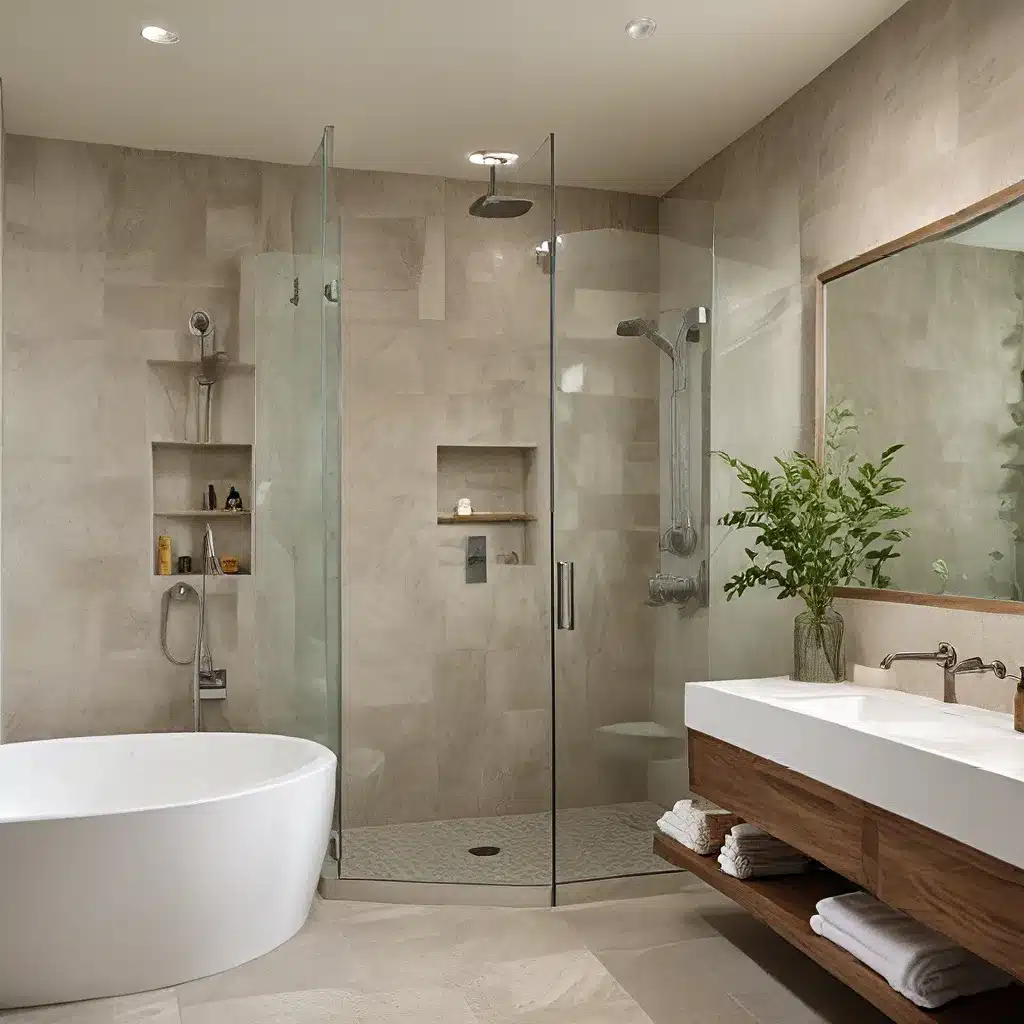
In an age where environmental consciousness is becoming paramount, homeowners and businesses alike are seeking out sustainable solutions for their bathroom design and renovation needs. One of the most crucial aspects of creating a green oasis is the careful selection of washbasins, sinks, and other bathroom fixtures. These elements not only contribute to the overall aesthetic appeal of the space but also play a pivotal role in reducing our environmental footprint.
Washbasin Materials: Balancing Beauty and Sustainability
When it comes to washbasin design, the material selection is a critical decision that can significantly impact the sustainability of your bathroom. Traditional materials like porcelain and ceramic have long been staples in the industry, but they are now being challenged by more eco-friendly alternatives.
Aquatica, a leading manufacturer of innovative bathroom products, advocates for the use of natural stone and engineered quartz in their washbasin designs. These materials not only boast a stunning visual appeal but also offer superior durability and longevity, reducing the need for frequent replacements. Additionally, many stone and quartz options are made from recycled or reclaimed materials, further contributing to their eco-friendly credentials.
Another sustainable washbasin option gaining popularity is cast concrete. This versatile material can be molded into a wide range of shapes and sizes, allowing for unique and customizable designs that seamlessly integrate with the overall bathroom aesthetic. Cast concrete washbasins are often finished with a smooth, polished surface that complements both modern and traditional design styles.
Innovative Sink Designs for Water Conservation
The environmental impact of bathroom fixtures extends beyond the material selection, with water conservation becoming an increasingly important consideration. Manufacturers are now showcasing innovative sink designs that prioritize water efficiency without compromising on functionality or style.
One such example is the touchless faucet, which uses motion-sensing technology to automatically turn the water on and off. This feature not only reduces water waste but also promotes a more hygienic user experience, as there is no need for physical contact with the faucet. Washbasin Factory offers a wide range of touchless faucets in various finishes to complement any bathroom decor.
Another water-saving option is the dual-flush toilet, which allows users to select between a full flush for solid waste and a reduced flush for liquid waste. This simple yet effective design can significantly reduce the overall water consumption in a household or commercial setting, making it an excellent choice for those seeking to minimize their environmental impact.
Thoughtful Bathroom Layout and Ventilation
While the selection of washbasins and sinks is crucial, the overall layout and ventilation of the bathroom also play a vital role in creating a sustainable sanctuary. Proper planning and design can enhance energy efficiency, improve indoor air quality, and reduce the risk of mold and mildew buildup.
One key consideration is the placement of the bathroom fixtures in relation to the room’s ventilation system. Ensuring adequate airflow and proper exhaust can help mitigate issues like excessive moisture, which can lead to the growth of harmful bacteria and mold. Strategically positioned exhaust fans or ductless ventilation systems can effectively remove moisture-laden air, maintaining a healthier indoor environment.
Furthermore, the layout of the bathroom can be optimized to minimize water usage and energy consumption. For instance, grouping the washbasin, toilet, and shower in close proximity can reduce the distance water needs to travel, minimizing waste. Additionally, incorporating natural lighting and energy-efficient LED lighting can help reduce the overall energy demands of the space.
Maintenance and Longevity: Ensuring a Sustainable Future
Sustainable bathroom design is not just about the initial selection of materials and fixtures; it also involves considering the long-term maintenance and longevity of these elements. Proper care and upkeep can extend the lifespan of washbasins, sinks, and other bathroom fixtures, reducing the need for frequent replacements and contributing to a more environmentally responsible approach.
Manufacturers often provide detailed guidance on the appropriate cleaning and maintenance protocols for their products. Following these recommendations, which may include the use of pH-neutral cleaners and soft, non-abrasive cloths, can help preserve the integrity and appearance of the fixtures over time.
In addition to proper maintenance, the selection of durable and long-lasting materials is crucial for ensuring a sustainable bathroom. Porcelain, ceramic, and engineered stone are renowned for their exceptional resistance to scratches, stains, and chipping, making them excellent choices for high-traffic areas. By investing in quality, well-maintained fixtures, homeowners and businesses can reduce their environmental impact and enjoy a beautiful, functional bathroom for years to come.
Embracing the Future of Sustainable Bathrooms
As environmental consciousness continues to grow, the demand for eco-friendly bathroom solutions is on the rise. By carefully considering the materials, design, layout, and maintenance of washbasins, sinks, and other fixtures, homeowners and businesses can create a sustainable sanctuary that not only looks beautiful but also minimizes their environmental footprint.
The future of bathroom design is undoubtedly green, and the experts at Washbasin Factory are here to guide you on your journey towards a more sustainable and environmentally responsible bathroom. Whether you’re planning a new construction project or embarking on a renovation, their knowledge and experience can help you make informed decisions that will positively impact both your living space and the planet.